Exploring ten of the world’s most precious dark sky reserves, where science, culture and luxury travel gather under the stars
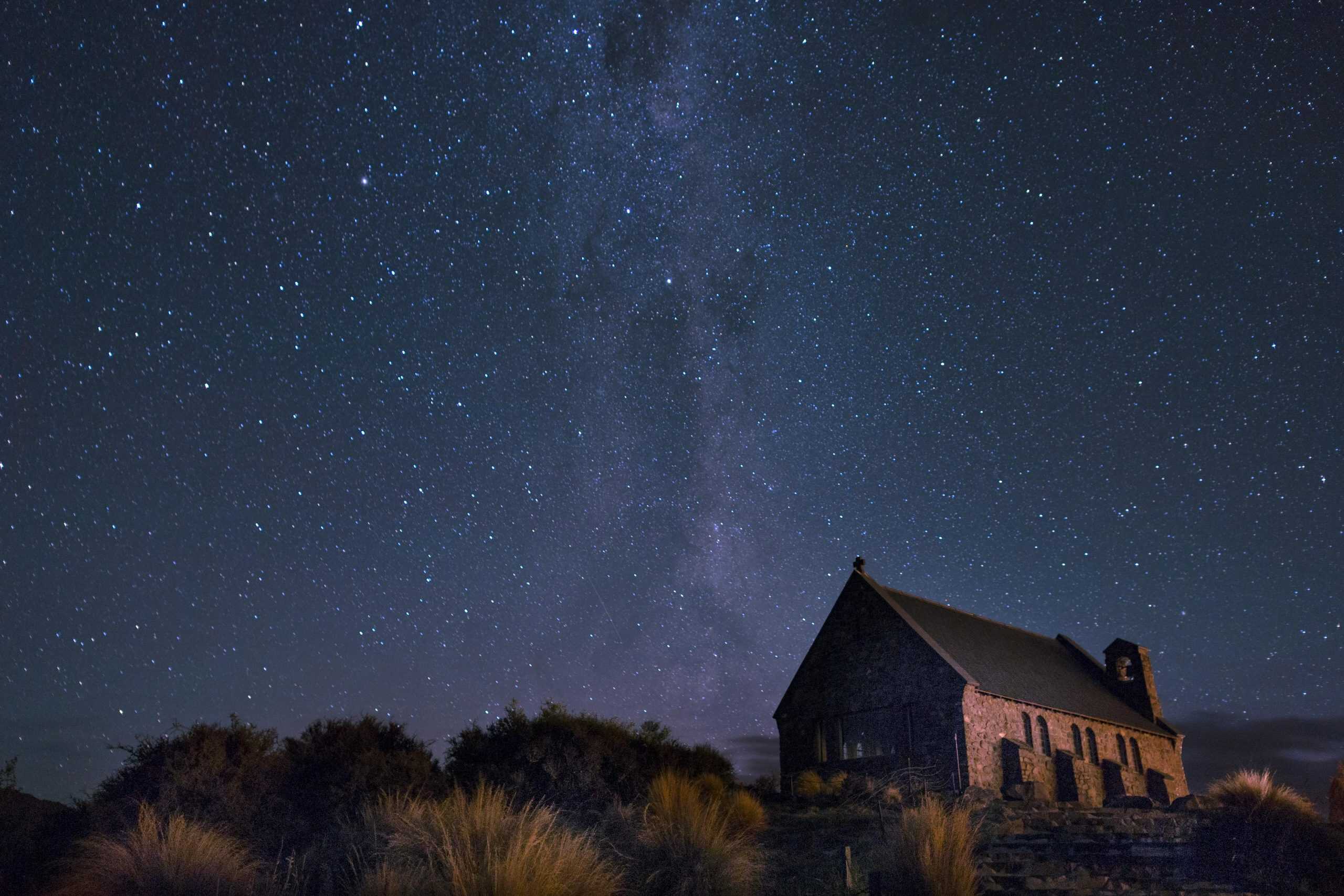
Above the silent plateau of Hanle in Ladakh, the night sky unfolds like a cosmic ocean. The Milky Way arches overhead in a ribbon of light so vivid it seems to pulse, untouched by city glow. Here, in one of the planet’s rare sanctuaries of darkness, the universe appears as it did thousands of years ago—brilliant, infinite, and humbling.
Dark Sky Reserves are havens where such clarity is protected. Recognised by the International Dark-Sky Association (IDA), these regions maintain natural darkness by limiting artificial lighting and promoting conservation of nocturnal environments. Their creation is not only about science but also about preserving a fading part of human experience. As urbanisation expands and light pollution erases the stars from view, these reserves safeguard both ecological balance and cultural memory.
Astro-tourism has transformed this pursuit of darkness into a form of luxury. Travellers now journey to remote deserts, mountains, and wildernesses to witness celestial wonders once common to all.
High-end lodges and guided observatories offer curated experiences under the stars, blending adventure with reflection. For many, the appeal lies beyond the spectacle—it is in the quiet reconnection with nature’s rhythm, a reminder of how small and connected we are. In an age defined by artificial brilliance, true darkness has become precious, a luxury that restores a forgotten kind of light.
The Science and Spirit of Dark Sky Reserves
A Dark Sky Reserve is more than a stretch of land where the stars shine brightly. It is a protected region that follows strict scientific and environmental standards set by the International Dark-Sky Association. To earn this certification, the area must reduce artificial lighting, install shielded fixtures, and maintain zones free from unnecessary glare.
The process involves the participation of local communities, environmental groups, and scientists who work together to preserve the purity of the night. Public education is also key, ensuring that residents and visitors understand how light pollution affects wildlife, energy use, and human health.
These reserves represent a rare harmony between science and spirituality. Observatories here measure distant galaxies and cosmic radiation, while nearby communities often keep alive centuries-old traditions of sky watching. Farmers may still use constellations to mark planting seasons, and storytellers recall legends that connect stars to creation. This coexistence of research and reverence reveals how the night sky continues to inspire both intellect and imagination.
Standing under an unpolluted sky can be a deeply emotional experience. The stars seem closer, their light more intimate. For many travellers, it sparks humility and reflection, a quiet reminder of humanity’s small yet meaningful place in the universe. In the stillness of these dark sky sanctuaries, science meets silence, and people rediscover a forgotten truth—the night itself is one of Earth’s greatest wonders.
Top Dark Sky reserves in the World
Hanle Dark Sky Reserve, Ladakh – India
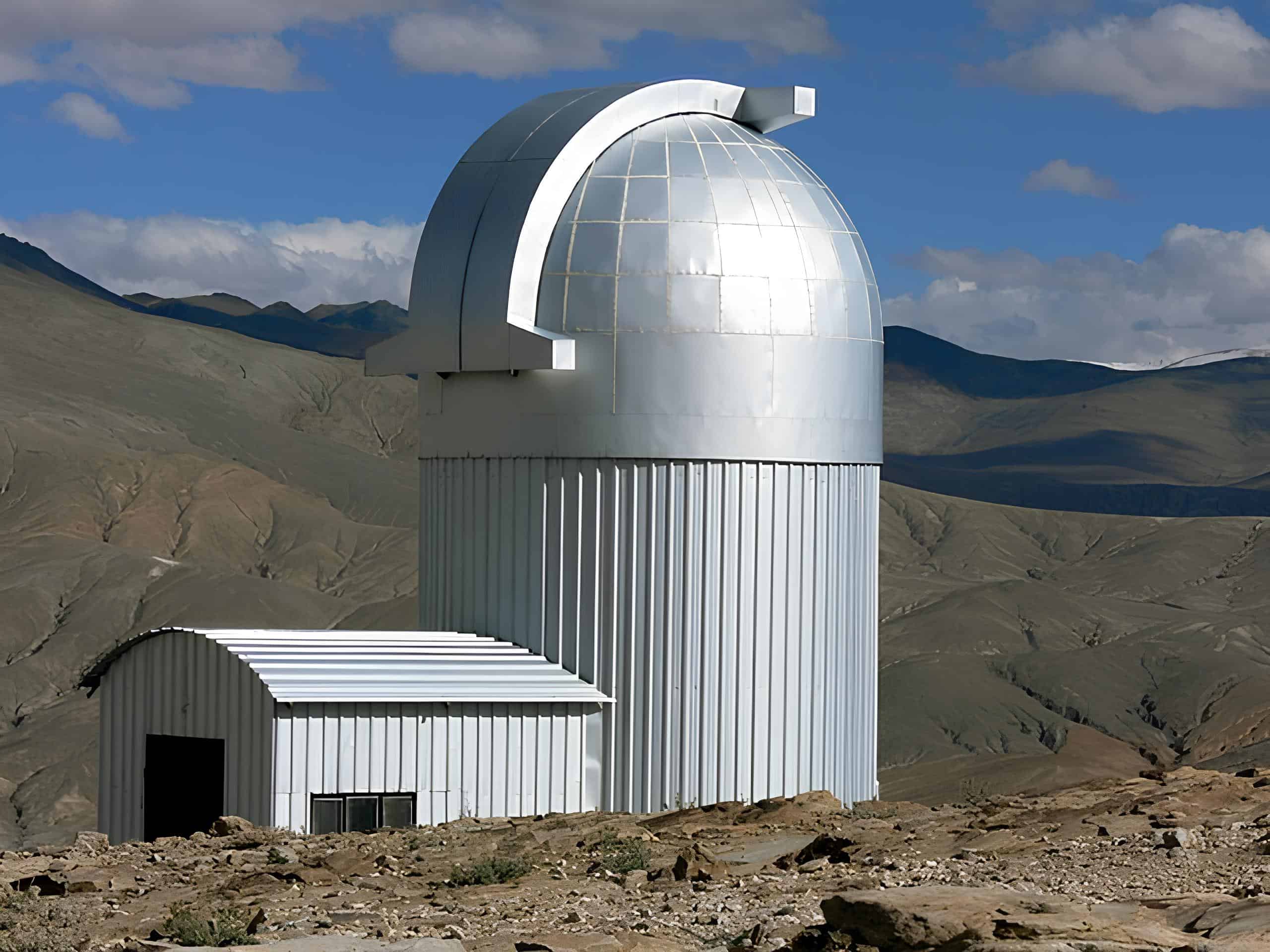
Hanle Dark Sky Reserve is India’s first officially recognised dark sky sanctuary, notified in 2022 and already spoken of as the country’s crown beneath the cosmos. It sits at around 4,500 metres above sea level in the starkly beautiful Changthang region of Ladakh, inside the Changthang Wildlife Sanctuary. The tiny village of Hanle lies in the rain shadow of the Himalaya, close to the Indian Astronomical Observatory, one of the world’s highest observatory sites. Thin, dry air, clear horizons, and almost no artificial light combine to create a sky of exceptional clarity.
The reserve is the result of a partnership between the Indian Institute of Astrophysics, the Department of Science and Technology and the Ladakh Autonomous Hill Development Council. Together, they have mapped zones for controlled lighting, drawn up guidelines for new construction and worked with residents so that development in Hanle supports both livelihoods and sky conservation. Solar-powered lighting, downward-facing fixtures and strict limits on glare help keep the night as naturally dark as possible.
For travellers, the experience feels intimate rather than commercial. Guests stay in simple homestays run by Changpa families or in small guesthouses that look out onto immense plateaus. After sunset, stargazing camps set up telescopes in open courtyards and fields. Visitors learn to trace constellations, watch satellites drift past and frame long exposure photographs of the Milky Way, which often appears as a luminous river flowing over the village. On special nights, local guides and astronomy enthusiasts host informal sky sessions that mix science with stories.
Sustainable tourism is central to the reserve. Training local youth as guides, drivers and astro volunteers ensures that income stays within the community. Scientists visit regularly for observations and outreach, turning Hanle into a quiet bridge between cutting-edge research and rural life.
What lingers most, though, is the silence. In Hanle, the night can feel so still that the stars seem to have their own sound, a soft presence that wraps itself around the traveller and stays long after the trip ends.
NamibRand Nature Reserve, Namibia
NamibRand Nature Reserve in southern Namibia is often described as one of the quietest and darkest places on Earth. Spread across a vast private conservation landscape in the Namib Desert, it was recognised as an International Dark Sky Reserve in 2012 and classified at the highest level of sky quality. With almost no permanent settlements, no highway glare and no industrial development, the night here belongs completely to the stars. The Milky Way appears as a bright river of light, while the Large and Small Magellanic Clouds hang low over the horizon, clearly visible to the naked eye.
By day, NamibRand is a story of ochre dunes, gravel plains and distant mountains. After sunset, it becomes an open-air observatory. Small, low-impact lodges are scattered across the reserve, each designed to minimise light pollution and visual clutter. Many properties use soft, shielded outdoor lighting, warm colour temperatures and strict curfews so that the sky remains untouched. A number of lodges offer open-roof or glass-front suites where guests can fall asleep while looking at the stars.

Astro experiences are woven easily into the rhythm of the desert. Guides lead night walks where guests learn to identify southern hemisphere constellations and listen to stories that connect them with the land. Simple telescopes are set up on viewing decks so visitors can explore star clusters, nebulae and distant planets. The dry air and high transparency of the atmosphere make the reserve a favourite for astrophotographers, who capture long exposures of star trails above rust coloured dunes.
Conservation sits at the heart of NamibRand. The reserve is managed to protect fragile desert ecosystems, restore wildlife corridors and reduce human footprint. Dark sky protection is treated as another form of habitat care, since many nocturnal animals rely on natural cycles of light and dark. For travellers, the result is an experience that feels pure and uncluttered. In the stillness of this desert, under a sky that looks almost three-dimensional, time seems to slow, and the universe feels startlingly close.
Kerry International Dark Sky Reserve, Ireland
On the wild Iveragh Peninsula in County Kerry, the Atlantic wind, rugged cliffs, and quiet villages create a landscape that already feels timeless. At night, the sky completes the picture. Kerry International Dark Sky Reserve is recognised as a Gold Tier site, a mark of exceptional night sky quality. It stretches across a crescent of coastal communities between Kells and Caherdaniel, where there are no large cities, few bright roadways and a strong local commitment to keeping artificial light under control.
The reserve exists because residents, tourism operators and local authorities chose to protect their night as carefully as their scenery. Streetlights are shielded and directed downward, unnecessary illumination is reduced, and new developments must follow strict lighting guidelines. This collective effort allows the Milky Way to shine clearly across the sky for much of the year. On moonless nights, visitors often see a dense scatter of stars with dark rifts and bright knots, the kind of sky that inspired sailors and storytellers along this coast for generations.
Stargazing in Kerry feels closely tied to place. Many visitors base themselves in small coastal villages such as Waterville, Ballinskelligs or Portmagee. Here, local guides host informal dark sky walks, combining constellation spotting with tales of Celtic mythology, seafaring traditions and island life. Some operators organise boat trips or viewing sessions with Skellig Michael as a distant silhouette, adding a touch of drama to the night. During annual dark sky events and festivals, the region comes alive with talks, telescope demonstrations and family-friendly activities that bridge science, culture and tourism.
Accommodation options range from family-run guesthouses and cottages to boutique hotels. Several properties actively support the reserve, dimming external lighting at night and providing blankets, star maps and red-filtered torches so guests can enjoy the view in comfort. For luxury travellers, the appeal lies in the gentle rhythm of the experience. Days can be spent driving the Ring of Kerry, visiting heritage sites and lingering at small cafes, while nights belong to the sky and the sound of the ocean in the background.
Central Idaho Dark Sky Reserve, United States
Central Idaho Dark Sky Reserve lies in a vast sweep of mountains, forests and rivers in the American state of Idaho. It was recognised as an International Dark Sky Reserve in 2017 and is noted for its exceptionally dark, clear nights. Covering thousands of square kilometres, it includes parts of the Sawtooth National Recreation Area and the communities of Ketchum, Sun Valley and Stanley. Rugged peaks, glacial valleys and alpine lakes give the region a raw beauty by day. At night, that same landscape becomes a dramatic foreground for one of the finest views of the Milky Way in North America.
What makes Central Idaho special is the way remote wilderness and small-town effort work together. The surrounding public lands have no large cities or heavy industry, which keeps skyglow naturally low. Local authorities and residents have then added careful lighting rules on top of this advantage. Streetlights are shielded and directed, billboards are limited, and many businesses have replaced harsh white lighting with warmer, more sky-friendly options. These measures protect the darkness while still allowing communities to function comfortably.
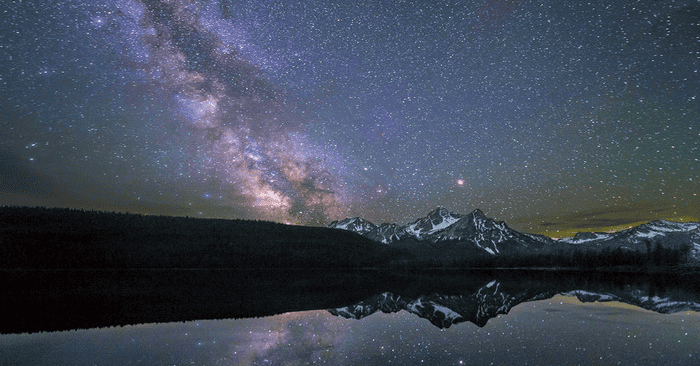
Visitors often arrive for hiking, mountain biking or river rafting and then discover that the nights are an experience in their own right. On clear evenings, the Milky Way stretches across the sky in a dense, bright band. Constellations such as Orion and Cygnus stand out with unusual clarity and, in the right season, guests can spot planets shining steadily among the stars. Local outfitters and lodges offer simple stargazing sessions with binoculars and small telescopes. Parks and public lands host occasional star parties where astronomers set up larger instruments and guide visitors through deep sky objects.
For travellers seeking a sense of space, Central Idaho delivers both physical and emotional room to breathe. The combination of wild land, clean air and protected night creates an atmosphere that feels far removed from busy urban life. Time spent here often stays in memory as the place where the sky seemed to open fully for the first time.
Greater Big Bend International Dark Sky Reserve, United States and Mexico
Greater Big Bend International Dark Sky Reserve spreads across a vast region in West Texas and northern Mexico, united by one of the darkest night skies in North America. Recognised as an International Dark Sky Reserve in 2022, it is among the largest such areas in the world. The designation brings together Big Bend National Park, Big Bend Ranch State Park and surrounding conservation lands in Texas, along with protected areas across the border in Chihuahua and Coahuila. Desert mountains, deep canyons and open plains create an immense, dramatic stage for the stars.
Its strength lies in cooperation. Communities, land managers and observatories on both sides of the border have committed to protecting the night. Outdoor lighting codes favour shielded fixtures and lower intensity bulbs. Ranches, parks and small towns work to limit unnecessary glare so that the natural darkness remains intact. As a result, the sky here still shows features that are invisible in most populated regions. Visitors can often see the Milky Way in vivid detail, along with faint star clouds and even zodiacal light when conditions are right.
This sense of scale shapes Astro experiences. In and around Big Bend National Park, travellers can join ranger-led night sky programmes that introduce constellations and share stories about Indigenous sky traditions and early navigators. McDonald Observatory, located in the broader region, adds a strong scientific presence through its public star parties and educational sessions, though it sits outside the core reserve. Some lodges and guest ranches offer dedicated stargazing terraces and provide binoculars or small telescopes for guests.
The desert at night feels both remote and welcoming. Temperatures drop, winds settle and the silhouettes of mountains cut clean lines against the sky. Wildlife moves mostly by sound, leaving the dome of stars as the main spectacle. For travellers, the reserve offers a rare chance to experience a truly continental sky, one that ignores national borders and reminds people that the night is a shared resource.
Exmoor National Park, United Kingdom
On the rugged moors and coastal cliffs of south west England, Exmoor National Park offers a quieter, more contemplative version of countryside life. When daylight fades and village lights soften, the landscape reveals the reason for its international reputation. Exmoor was the first area in Europe to be recognised as an International Dark Sky Reserve, with its status confirmed in 2011. This early commitment set a benchmark for how protected landscapes can also protect the night.
The park sits across parts of Devon and Somerset, far from major cities and heavy industry. Deliberate choices strengthen that natural advantage. Local councils, tourism businesses and residents have worked together to improve outdoor lighting, using shielded fixtures, reducing glare and encouraging the use of warmer, lower intensity bulbs. Farmyards, inns and campsites are encouraged to dim or switch off unnecessary external lights after certain hours. These small, practical steps mean that the Milky Way is visible from many parts of the park, and familiar constellations appear with a clarity that surprises visitors who are used to washed-out urban skies.
Experiences on Exmoor blend stargazing with the park’s existing strengths. Guided night walks lead guests to viewpoints such as Dunkery Beacon or coastal headlands where the horizon opens fully. Rangers and trained guides help visitors identify constellations, planets and seasonal features like the Andromeda Galaxy or the summer triangle. The annual Dark Skies Festival adds talks, photography workshops and family events that explain both the science of the stars and the importance of reducing light pollution. Nocturnal wildlife, such as owls and bats, often becomes part of the story, showing how many species depend on natural cycles of darkness.
Accommodation on Exmoor ranges from traditional inns and farm stays to small boutique hotels. Many properties actively support dark sky tourism by dimming outdoor lighting and providing star charts or binoculars. Some even create simple stargazing corners in gardens and fields, where guests can sit wrapped in blankets while looking up. The mood is gentle rather than extreme. After a day of walking on heather moors, exploring medieval villages or watching the tide along the Bristol Channel, the night sky feels like a final, unexpected luxury.
Wairarapa Dark Sky Reserve, New Zealand
On the southeastern edge of New Zealand’s North Island, the Wairarapa region stretches from vine-clad valleys to the wild sweep of the Pacific coast. By day, the area is known for its wineries, rolling hills and laid-back rural charm. At night, another identity appears. Wairarapa Dark Sky Reserve has been recognised for its commitment to maintaining a naturally dark night, giving visitors a clear view of the southern sky in a setting that feels intimate and lived in rather than remote.
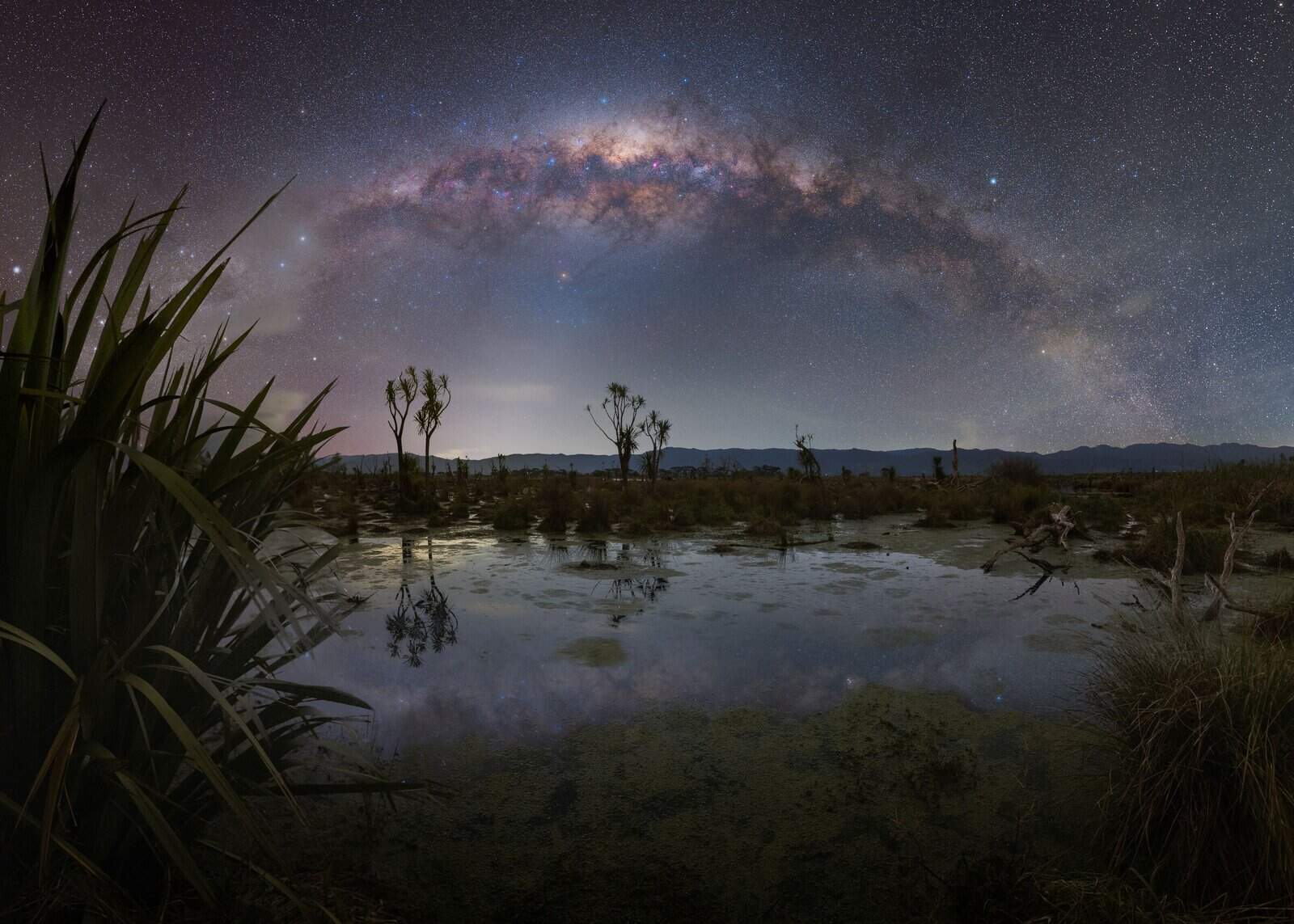
The reserve brings together small towns, farmland and coastal landscapes under a shared goal. Local councils and communities have introduced careful lighting rules, encouraging shielded fittings, lower brightness and warmer colour temperatures. Businesses are asked to curb unnecessary outdoor lighting, and households are increasingly aware of how porch lights and garden lamps affect the sky. These choices allow the Milky Way, prominent southern constellations and the Magellanic Clouds to return as regular features overhead. The result is a sky that feels both accessible and impressive, close to daily life yet far richer than in most urban areas.
Wairarapa’s dark sky experience is deeply connected with culture. Many guided stargazing sessions weave in Māori astronomy, which links stars and constellations to seasonal patterns, navigation and storytelling. The cluster known as Matariki, associated with renewal and remembrance, often becomes a focal point for discussions about identity and tradition. Local guides combine laser pointers and telescopes with narratives that place visitors within a broader Pacific sky heritage, making the night feel both educational and emotionally resonant.
Visitors can choose from a range of stays in and around towns such as Martinborough, Greytown and Carterton, as well as more rural lodges and farm stays. Some properties provide blankets, star maps and simple telescopes for guests who want to explore the night on their own. Others partner with astronomy groups to host small gatherings under the stars. It is easy to design days around wine tasting, cycling or coastal drives, then reserve evenings for quiet time outdoors, watching the sky deepen and fill with light. In Wairarapa, dark sky travel feels less like an expedition and more like being welcomed into a community that has decided the stars are worth keeping.
Pic du Midi Dark Sky Reserve, France
High in the French Pyrenees, Pic du Midi stands like a balcony between mountain and sky. The summit, reached by cable car from the village of La Mongie, is home to the Pic du Midi Observatory and forms the heart of a recognised dark sky reserve. At more than 2,800 metres above sea level, the site rises above much of the haze and low cloud that can blur the night. The result is a crisp, transparent sky where stars appear sharp and plentiful, even to the naked eye.
Pic du Midi has a long scientific history. The observatory was founded in the nineteenth century and has contributed to research in fields such as solar physics, planetary science and atmospheric studies. Today, professional astronomy continues, but the site also opens its doors to the public. Evening visits and overnight stays allow guests to share part of the astronomers’ world. Visitors can tour some of the domes, view historical instruments and learn how observations are made in modern times.
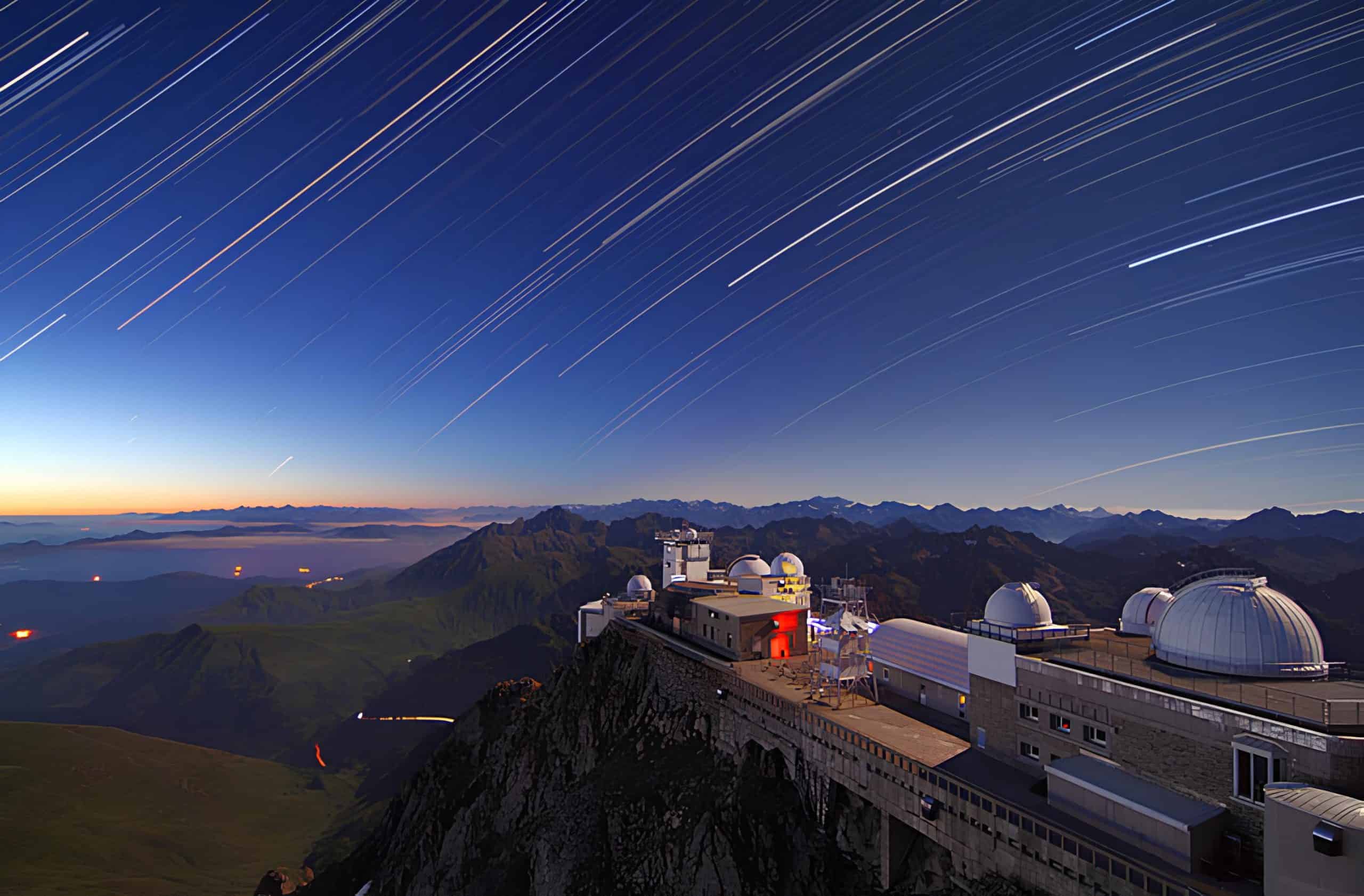
After dark, the experience becomes quietly spectacular. Terraces encircle the summit, offering unobstructed views in every direction. With almost no competing light nearby, the Milky Way stretches overhead in a bright, detailed band. Constellations such as Cassiopeia and Orion stand clearly against a velvety background. On suitable nights, staff set up telescopes so guests can see craters on the Moon, the moons of Jupiter or the rings of Saturn. The combination of altitude, clean air and professional guidance makes the sky feel unusually close.
The wider reserve includes surrounding valleys and smaller communities that work together to reduce light pollution. Local authorities have introduced better lighting design, promoting shielded fixtures and sensible brightness levels. This helps protect both astronomical work and nocturnal wildlife. Travellers who prefer to stay lower down can choose mountain hotels and guesthouses that support these principles, then ride the cable car for evening or overnight programmes at the summit.
What makes Pic du Midi special is the way it blends science, landscape and emotion. Guests step out into the cold, clear air and find themselves standing above a sea of peaks with the sky rising straight from the horizon. It feels like a meeting point between Earth and space, a place where the universe is not an abstract idea but a vivid presence overhead.
Why Darkness Matters, Beyond The View
Protecting the night sky is not only about beautiful photographs. It is also about keeping ecosystems and human bodies in balance. Many birds migrate at night, using stars and the natural pattern of light and dark as guides. Excessive artificial light can disorient them, causing collisions with buildings and drawing them off course. Nocturnal animals such as bats, owls, insects and some mammals depend on darkness for feeding, hunting and breeding. When nights become permanently bright, their behaviour changes, food chains are disrupted and entire habitats can be affected.
Humans are not separate from this pattern. Our bodies run on circadian rhythms, internal clocks that respond to the daily cycle of light and dark. Too much artificial light at night, especially strong blue white light, can interfere with sleep, hormone production and overall health. By keeping some places naturally dark and by using smarter lighting elsewhere, societies protect both environmental and public well-being.
This is why organisations treat the night sky as a form of heritage. The International Dark Sky Association works with partners worldwide to recognise and protect sites where natural darkness is preserved. UNESCO has also highlighted the night sky as part of humanity’s shared cultural and scientific legacy, linked to navigation, agriculture, religion and art across civilisations. Astronomers often say that the stars are humanity’s oldest textbook, while philosophers have long regarded the night as a space for reflection and humility. In many ways, our relationship with darkness is part of what makes us human. To lose the stars would be to lose a mirror that has helped us understand our place in the universe for thousands of years.
The Sky That Connects Us All
On a desert dune in Namibia, a hilltop in Ireland, a summit in the Pyrenees or a high plateau in Ladakh, the details of the landscape change, but the feeling of looking up is remarkably similar. Different languages name the constellations in different ways, yet Orion, the Pleiades and the Milky Way bind these places together in a shared map of light. Under every dark sky reserve, travellers find themselves part of the same quiet conversation with the universe, no matter which country their journey began in.
Technology has carried us deeper into space than any generation before, and tourism has carried us farther across the planet in search of experience. Yet the deepest impact of dark sky travel is often the simplest one. A telescope can reveal distant galaxies, and a luxury lodge can frame the view with comfort and care, but the real wonder is older than both. It is the moment when the noise of daily life falls away, and a person feels as if the sky is looking back.
In protecting darkness, we safeguard not absence, but light — the oldest kind there is.
Read more: Latest



